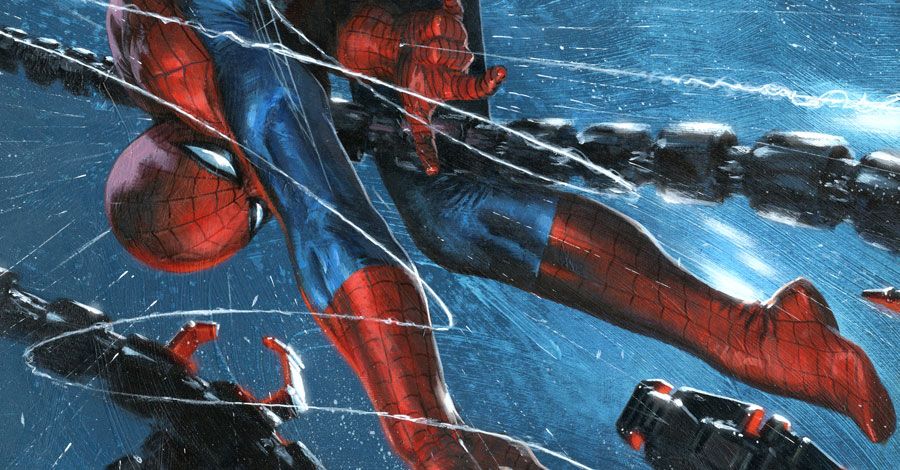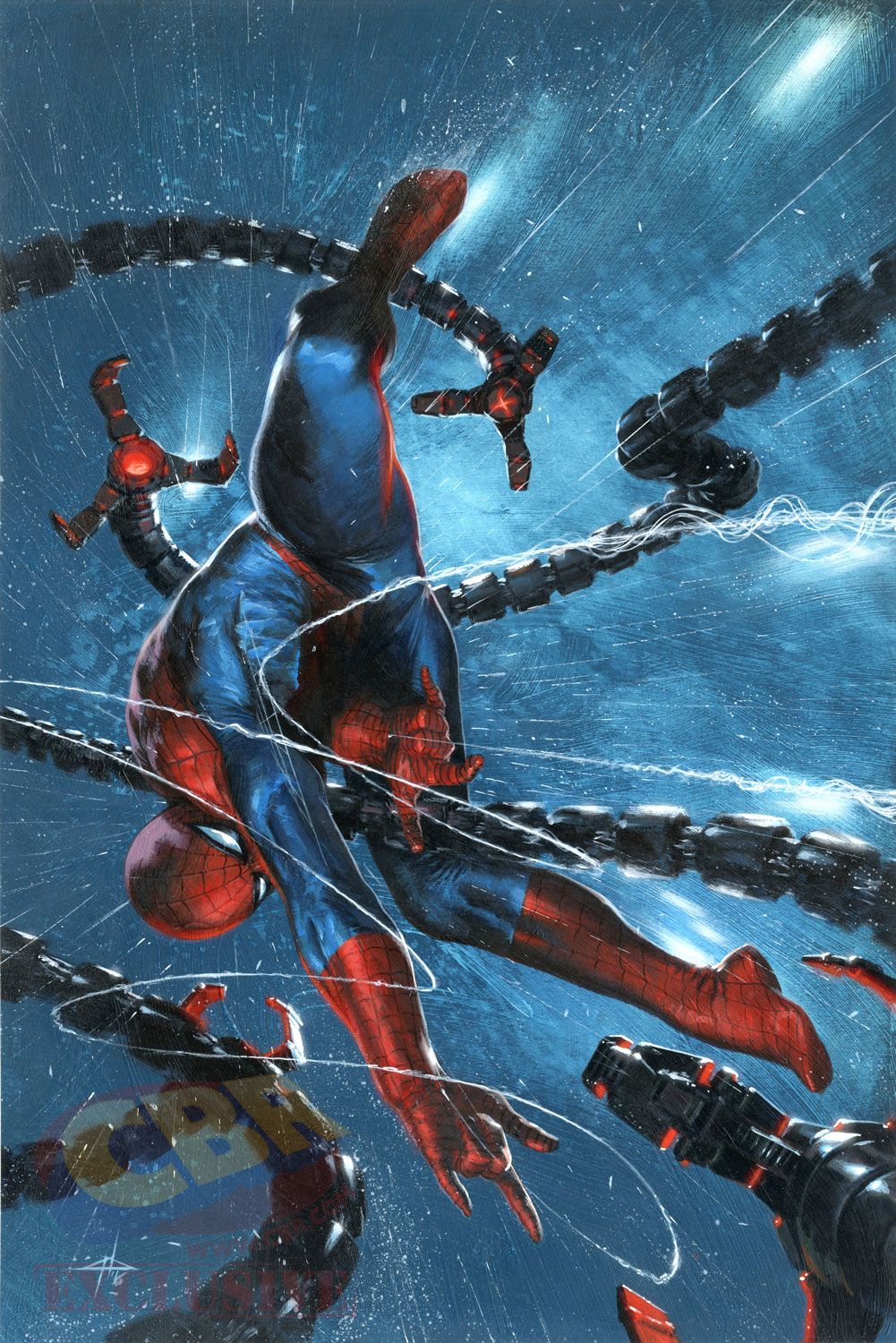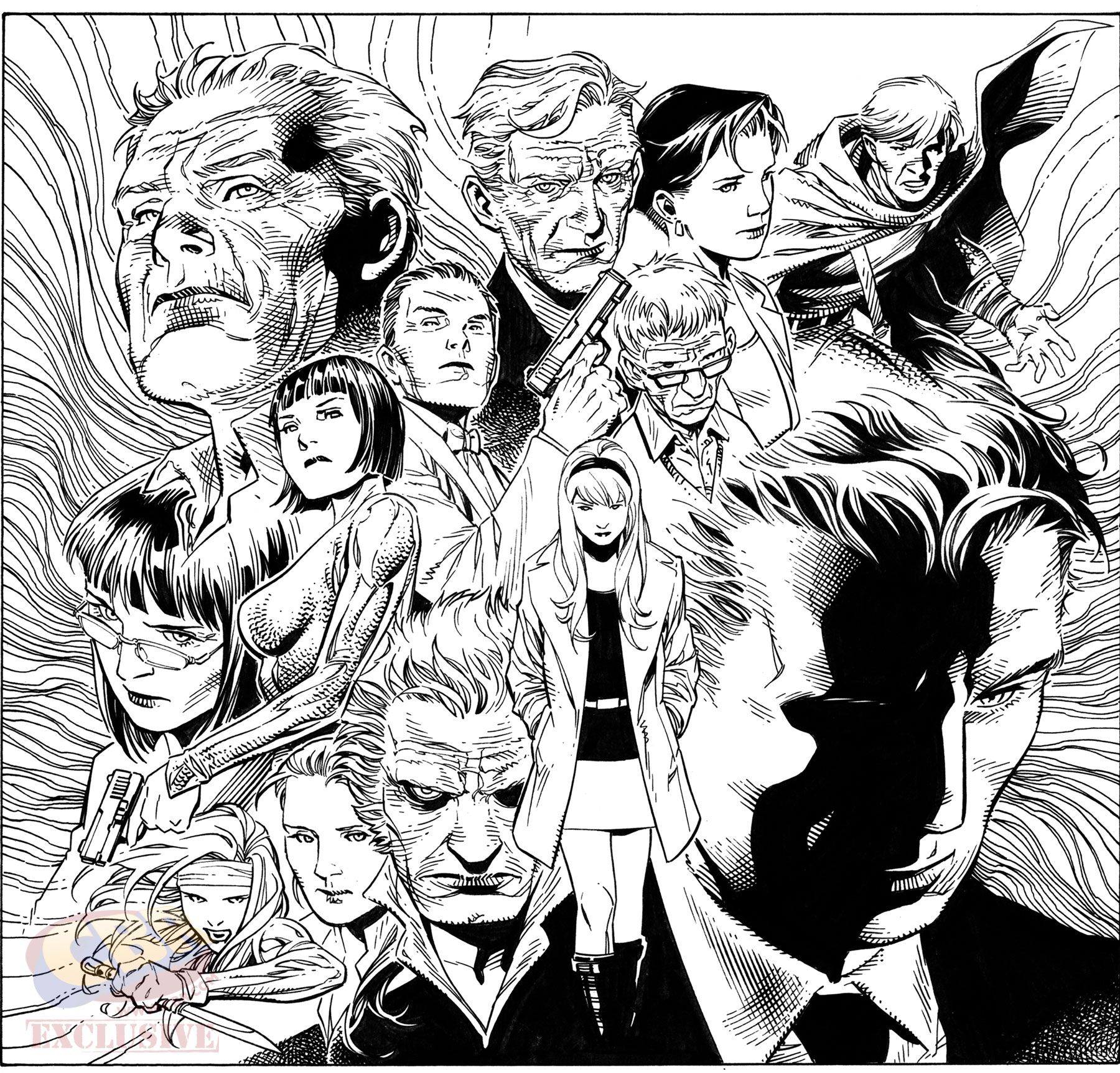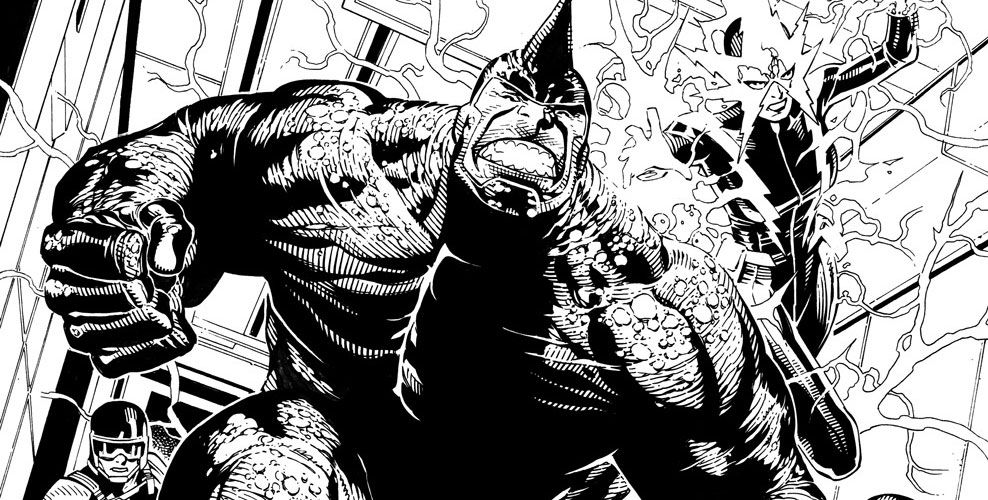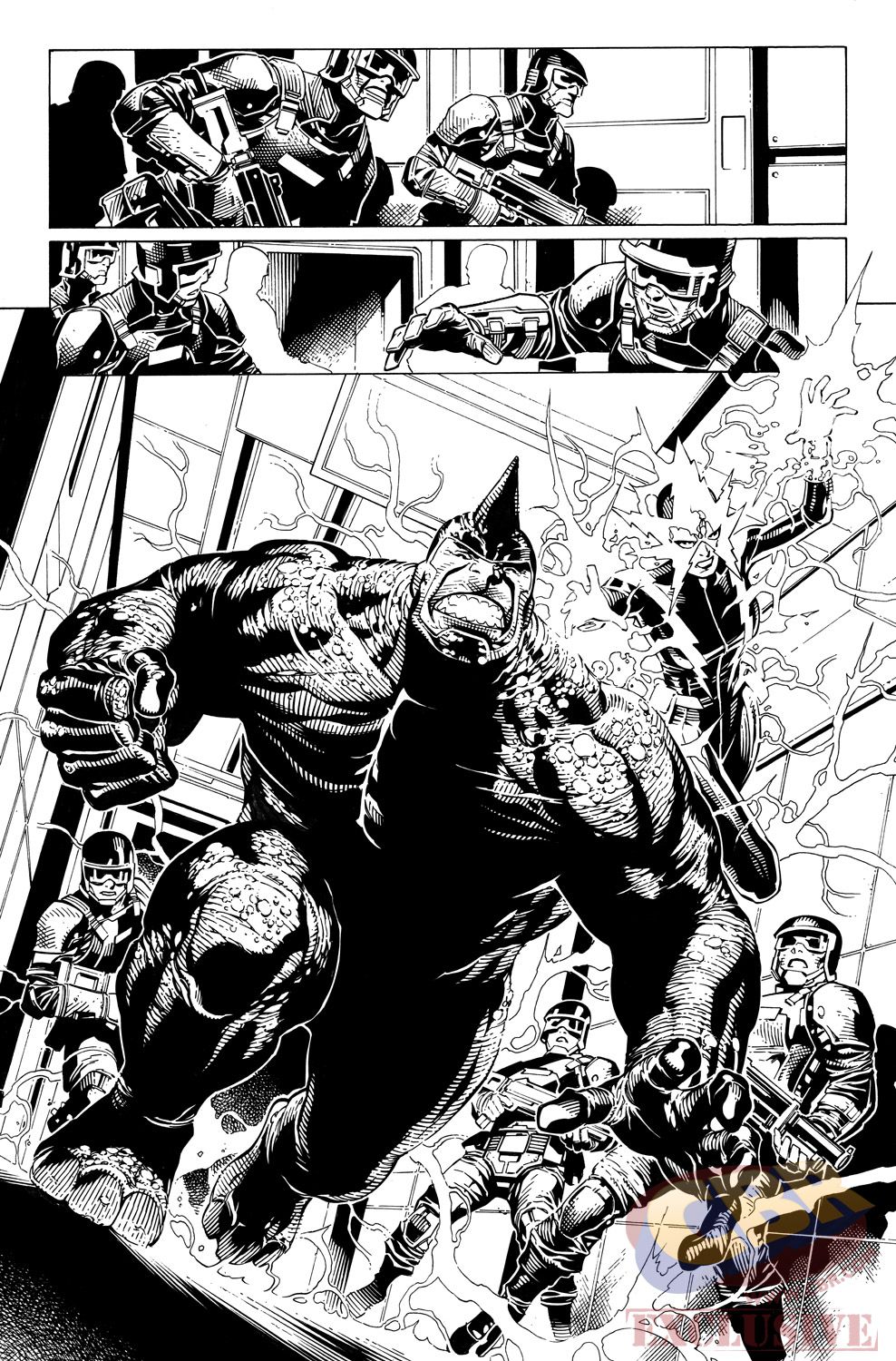One of Spider-Man's strangest villains has to be Peter Parker's old college professor turned mad scientist, Miles Warren. I his costumed villain role as the Jackal, Warren was the mastermind behind one of the most divisive eras in Spidey history, "The Clone Saga." In one of Marvel's Free Comic Book Day 2016 offerings, he and his clones secretly stepped back into Parker's life with a plan that will force the hero to confront some of the most painful moments in his career -- the many people he's failed to save.
RELATED: [Redacted] Returns as "The Clone Conspiracy" Kicks Off in "Amazing Spider-Man" #16 Preview
In current issues of "Amazing Spider-Man," writer Dan Slott and artist Giuseppe Camuncoli have shown how the Jackal and his associates are laying the groundwork for the villain's master plan -- a plan which will come to fruition this October in the five issue Spider-Man event "The Clone Conspiracy" by Slott and artist Jim Cheung.
Slott and Executive Editor of Marvel's Spider-Man titles Nick Lowe joined CBR for a chat about the Jackal, the impact and divisiveness of clones in Spidey's world, and how the stakes raised in "The Clone Conspiracy" compare to previous Spider-Man events.
CBR News: It's interesting that the title of this Spidey event is "The Clone Conspiracy" considering the divisive feelings the word "clone" evokes among fans. For some, it's a reminder of an era of Spider-Man history they'd like to forget, and for others it evokes memories of fan favorite Spidey characters like Ben Reilly and Kaine.
Nick Lowe: The second the word "clone" is said, it elicits so many emotional responses from so many different people, and it very much depends on your age, where you were when "The Clone Saga" was coming out, etc... That strong response, coupled with the story Dan and Jim are telling, just clinched the title.
Dan Slott: That's kind of the fun of it. We know how divisive clones are, and we're going to own it. We're really going to try and turn the term "clone" around. We're going straight into the heart of the idea of cloning, and we're going to mine it for all the fear and trepidation you have.
Lowe: Dan digs a lot deeper than a lot of previous clone stories. On top of that, our society has advanced so much since "The Clone Saga." There are cloned sheep that are alive and walking around this world. They're growing cloned pieces of people's bodies to graft onto them. So this story has even more relevance.
Dan's digging into what it is to be a clone. When does a clone stop being something fake and become as real as you or me? And what does it mean for death? This is as much a story about death as it is about cloning.
Death has played a pretty big role in Spider-Man's life. In fact, his defining moment as a hero is the death of his Uncle Ben.
Slott: All of the big key moments in his life have been about loss. This is a character who has to deal with death, grief and mourning on a far too regular level than other heroes. And the fact that he's been around for 50-plus years means that all those stories build up like scar tissue.
I always knew that really early on in my run I was going to do a scene where there'd be a dream sequence of Spider-Man in a graveyard and everybody rising up. There would be this unearthly chorus of all these people who he somehow lost through his action or inaction.
So much of my run has been about him having the impossible goal of "No One Dies," and then him trying to deal with it when somebody does. In the first issue of this latest volume of "Amazing Spider-Man," you see how he's evolved. He's realized that it's unattainable and he can't have the goal of no one dies, but he's going to do everything in his power to save everyone he possibly can. The character has gone from this impossible mission statement to something more nuanced. Now, we're going to hit him square in the face with the fact that he lives in a comic book world where people can come back to life.

That's part of the language of superhero comics; people come back. So how is that going to fit into Spider-Man's worldview when he realizes, "What if I can save anybody, even those I've failed?"
At the center of "The Clone Conspiracy" is the Jackal, a villain Dan has written a few times during his Spider-Man run. In the past, he's been portrayed as almost Joker-like in the homicidal glee he gets from his sinister experiments, but from what we've seen here, Miles Warren is very much a changed man.
Slott: I've had the Jackal be Joker-like, but he's also very much the professor, taking Peter to school, and a lot of what he's been doing when we see him in things like "Spider-Island" are experiments. He's playing around with things. He's mastering his technology. His mad scientist schemes are very much about testing the limits of what he can do. Now, he's kind of reaching the ultimate limit with the biggest god complex all-time.
This is the supervillain Spider-Man has, who's mastered life and death, and for the journey that Peter's been on, that's such a great adversary to have!
Lowe: The Jackal is definitely a changed man. His outward appearance drives it home. Gone are his days with the furry green look. He's figured some new things out, and his technology is better than it ever has been.

The big question is, is the Jackal a supervillain if he solves the problem of death? If you could bring a loved one back from the dead, would you? Or if you could keep a loved one from dying, would you? It very much blurs the line between hero and villain and turns things that are black and white into a very big shade of gray.
When did you know this was the next big Spidey event instead of, say, a big arc of "Amazing Spider-Man?"
Lowe: This is something that Dan and I have been talking about since my first days in the office, two and a half years ago. This is a story unlike any Dan has ever told and I've ever worked on. It's weird, dark and it is very much a story that messes with your head. I had to be sold on it, and the more Dan figured it out and revealed what he wanted to do, the bigger gravitational pull that this story had.
It even got too big for our previous structure of events like "Spider-Verse" and "Spider-Island," where the stories were part of the "Amazing Spider-Man" run. We needed more room for the huge story and the great moments that Dan was building. And knowing that Jim Cheung was drawing it, the story became monumental.
And at one point, we thought, "This might be too dicey!" [Laughs] It became a freight train that couldn't be stopped and kept picking up speed.
Both Spider-Man and Peter Parker currently operate on a global scale. What does that mean for the cast size of "Clone Conspiracy?" Will other Spider powered characters like Miles Morales or Miguel O'Hara show up in the main title?
Lowe: This event is a little more focused. Every time we do one of these events, whether it's in "Spider-Man" or other books, but especially when it's in the Spider-stuff, we try to differentiate them and their scope. "Spider-Island" felt like the entire Marvel Universe, then "Spider-Verse" was every Spider character. With the real world aspects and the core meaning behind this story, it'ss a very different event.
It's going to have some pretty major effects, not only on Peter Parker, but so many of the characters in "Amazing Spider-Man" and surrounding it.
Most of the story takes place in San Francisco. You'll see why as the story unfolds. Each of the Spider-Man stories we've told in this new volume of "Amazing" digs into a location. So you get a story in Shanghai, a story in New York, a story in London. We've been popping around the globe and hitting all the major hubs of Parker Industries.
We haven't spent a lot of time in San Francisco, though, and that's where Horizon University is. Max Modell and company are out there. Prowler has been spending a lot of time out there, and you'll see the various reasons why Jackal is centered around there as well.
Finally, Jim Cheung has been working on issues of "The Clone Conspiracy" for several months now. How's his work progressing? Will Jim be able to provide art for all five issues?
Lowe: That is indeed the goal, and Jim is doing a fantastic job. He's working on issue #3 right now, and we're still some ways away from issue #1 coming out. I wish I could show you his amazing double-page spread in issue #2, but that would be rude of me.
Jim hasn't done a ton of interiors. He did our "Civil War II" story for Free Comic Book Day, and he's done things here and there, but having him do this whole epic I think is going to knock people into next week. He and Dan are a great team! This book feels like an instant classic, and I cannot wait for people to see it, read it, and experience it, because it is something truly special.
Slott: It's very exciting because up 'til now, the only time I've gotten to work with Jim was when he was doing the covers for "Avengers: The Initiative." Everything he's turning in for "Clone Conspiracy" is amazing. It's one of the most beautiful books I've worked on. There's some messed up stuff in it, and to see it so beautifully done is kind of thrilling. [Laughs]
Check back soon for part two of our look at "The Clone Conspiracy where CBR News chats with Slott and Lowe about "The Clone Conspiracy" tie-in issues of "Amazing Spider-Man," characters like Kaine and Ben Reilly, and which other books in the Spider-Man line will be immediately impacted by the Jackal's machinations.

